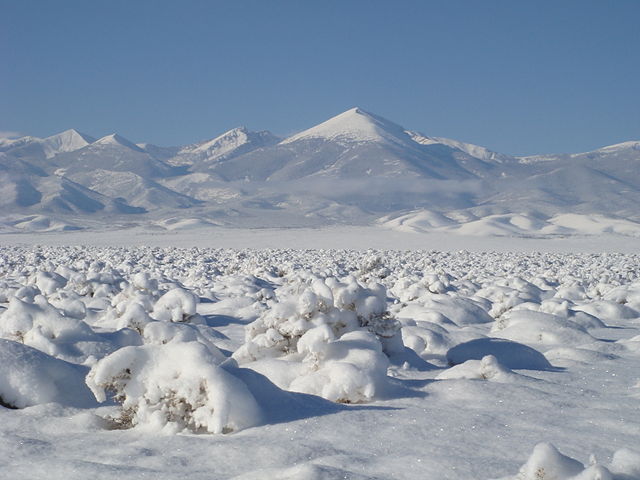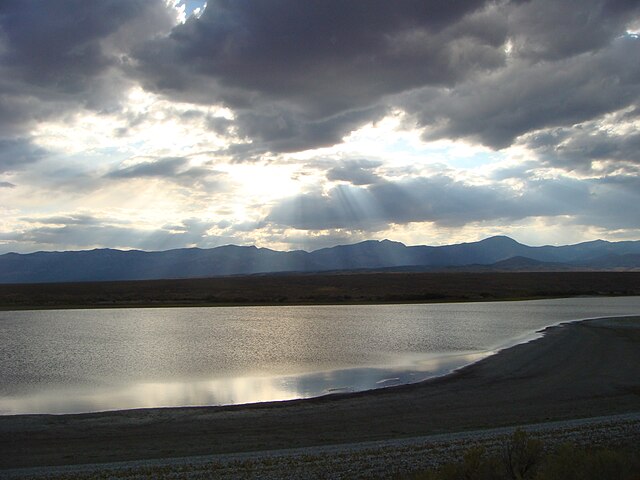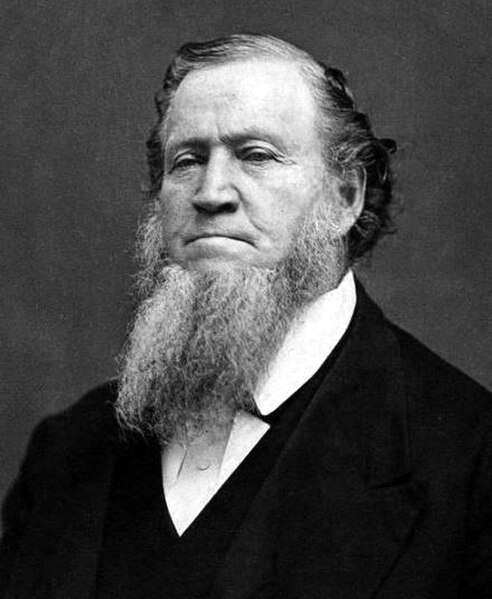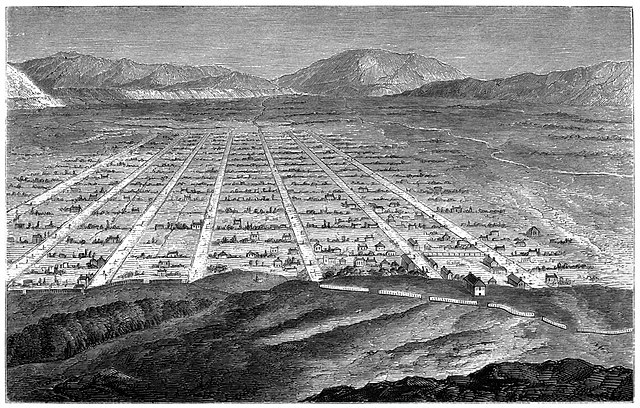Snake Valley (Great Basin)
Snake Valley is a north-south trending valley that straddles the Nevada–Utah border in the central Great Basin. It is bound by the Snake Range and the Deep Creek Mountains to the west and the Confusion Range to the east. The valley is the gateway to Great Basin National Park and Lehman Caves, which are located in the western part of the valley and on the southern Snake Range.
Sheep grazing in southern Snake Valley
Snowpack in the high mountains west of Snake Valley contributes to the (relatively) large amount of groundwater available in the area
The most prominent body of water in Snake Valley, Pruess Lake
Utah is a landlocked state in the Mountain West subregion of the Western United States. It borders Colorado to its east, Wyoming to its northeast, Idaho to its north, Arizona to its south, and Nevada to its west. Utah also touches a corner of New Mexico in the southeast. Of the fifty U.S. states, Utah is the 13th-largest by area; with a population over three million, it is the 30th-most-populous and 11th-least-densely populated. Urban development is mostly concentrated in two areas: the Wasatch Front in the north-central part of the state, which is home to roughly two-thirds of the population and includes the capital city, Salt Lake City; and Washington County in the southwest, with more than 180,000 residents. Most of the western half of Utah lies in the Great Basin.
Brigham Young led the first Mormon pioneers to the Great Salt Lake.
A sketch of Salt Lake City in 1860
Deseret Village recreates Utah pioneer life for tourists.
The Golden Spike where the First transcontinental railroad was completed in the U.S. on May 10, 1869, in Promontory, Utah







